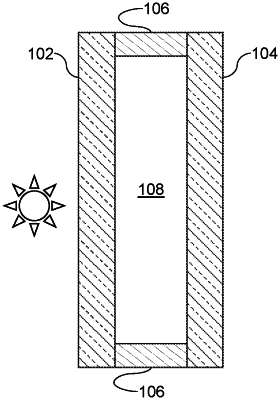| CPC E06B 9/32 (2013.01) [E06B 9/44 (2013.01); E06B 9/72 (2013.01)] | 21 Claims |

|
1. An insulating glass (IG) unit, comprising:
first and second substrates, each having interior and exterior major surfaces, the interior major surface of the first substrate facing the interior major surface of the second substrate;
a spacer system helping to maintain the first and second substrates in substantially parallel spaced apart relation to one another and to define a gap therebetween;
a shade interposed between the first and second substrates; and
a motor proximate to a first peripheral edge of the IG unit and interposed between the first and second substrates, the motor being dynamically controllable to cause the shade to extend towards a second peripheral edge of the IG unit opposite the first peripheral edge and to cause the shade to retract from the second peripheral edge towards the first peripheral edge,
wherein the shade is electrostatically couplable to one of the first and second substrates when the shade is extended, via complementary electrostatic connection areas provided to the shade and the one of the first and second substrates, and
wherein the complementary electrostatic connection areas comprise at least one first area on the one of the first and second substrates to which the shade is electrostatically couplable, wherein each said first area having a first dimension in a first direction being parallel to a width of the substrate and a second dimension in a second direction being perpendicular to the first direction; the complementary electrostatic connection areas further comprising at least one second area on the shade, and the complementary areas being patterned and matched with the first and second areas being sized, shaped, and arranged to be substantially in registration with one another when the shade is extended;
wherein the one of the first and second substrates to which the shade is electrostatically couplable supports, in the at least one first area, a first conductive coating and a first dielectric coating that has a thickness up to 25 μm, the first conductive coating being interposed between the first dielectric coating and the one of the first and second substrates to which the shade is electrostatically couplable; and
the shade includes a shade polymer supporting a second conductive coating in at least the one second area and a second dielectric coating that has a thickness up to 25 μm.
|